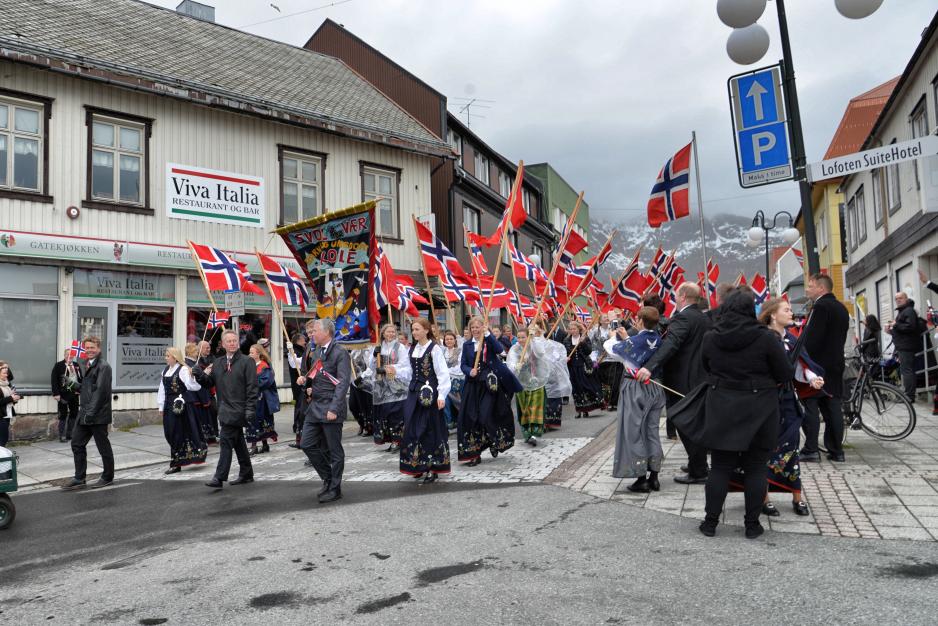Building Attractive and Sustainable Communities

We have realized, much through the rise of the World Wide Web, that we can «have it all» in terms of knowledge. To gain knowledge, you need to be educated, and in this global world we are willing to migrate to get it.
Access to education and qualified jobs has great impact on the development of arctic communities. We see examples of both the attractiveness of having access, and the migration if you don’t have access.
In several regions, especially in rural areas of the Arctic, the frequency of permanent migration to get access to relevant jobs and education is increasing. Many of the migrators are young females, which results in an ageing population and a surplus of men. This is the opposite of sustainable development. I myself have felt this, both having to move away from my home du be educated at the age of 15 – and the feeling of being “dragged” south get a good education.
But what made me flee the south, and choose the North as my partner in life? An exciting job and a good arctic education.
To strengthen the development for the people of the North, we have to build attractive communities, as well as sustainable ones. Scanning the report of «Arctic Social Indicators» from 2014, the word «development» appears over 100 times. In contrast:
- “Possibility”: 1
- “Attractive”: 1
- “Creating”: 5 (but none in relation to the word “jobs”)
This is no critique of the report, but it tells us where our focus lies.
Our goal should be to position people of the north to see their own possibilities, create job opportunities (both traditional and new) and work to gain a much better knowledge infrastructure.
Identities, innovation and involvement
In Northern-Norway, we have self-esteem and strong, Northern Norwegian identities. We have gone from being «a problem» for the State, to being the region with the highest potential. The economy in Northern Norway has a 3% higher growth than the rest of the country, and the Government has a vision of Northern Norway becoming «one of our most creating and sustainable regions».
Almost $20 000 000 was recently invested in a fund made to support new businesses in the North with international potential. Investing in ideas, teaching innovation and making knowledge about business-creation easily accessible will build both communities and nations in the Arctic.
We can’t put a university in every village to stop migration. But we can build strong schools that work closely with local and national business communities - spreading knowledge of local potential and future needs, and inspire youth to be educated within science, technology and innovation.
The cooperation between business communities and youth create motivation and knowledge of the local community. In the Northern city of Hammerfest, drop-out-numbers has decreased dramatically after the local petroleum industry got involved in education, speaking of their future needs - identifying youth’s possibilities. In Finnsnes, the salmon industry does the same. As well as being a win-win situation for both youth and industry, these examples show corporate social responsibility. To enable the schools to be flexible is key in these situations.
The Arctic Council
Having already established a working group on Human Development, creating a project based on mapping future possibilities within job creation and knowledge infrastructure in arctic communities, could be a necessary step.
Gaining information from members and observing states, the stories of innovation success and societal structure from the Arctic and other rural areas can spread to the youth seeking opportunities. Mapping which arctic issues that needs answering, and connecting these with students on higher education is another opportunity.
The people of the North will be empowered by attractive communities with opportunities and good knowledge infrastructure. Arctic nations and communities are empowered by their most important resource in the North – the people.
Future Arctic LeadersFuture arctic leaders from the Arctic States were last week gathered in Ottawa for a workshop. The occation was the Arctic Council Ministerial Meeting, and the young leaders met in Canada to discuss and share their vision for the future of the Arctic.
The Norwegian participants, Andreas Østhagen, Siri Beate Arntzen, Lena Fjellvang and Marion Aslaksen Ravna were all presenting a paper, and you can now read their thoughts on the Arctic future here in High North News.
Read all papers:
Developing the "North"? The Implications of Generalization
Our Future in the Sea
Indigenous Rights in the Arctic -an uncertain situation
Building Attractice and Sustainable Communities

